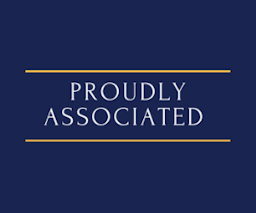
Innovative Hedging Strategies: The LP Derivatives Framework Explained
Unlocking the Future of AMMs: A Guide to LP Forward Contracts.
In the ever-evolving landscape of decentralized finance (DeFi), managing liquidity position risks has become a critical challenge for liquidity providers (LPs). The liquidity position derivatives framework introduced in this article offers a novel approach to addressing these challenges. This framework not only provides tools to measure and manage risks effectively but also aims to level the playing field in the automated market-making space, protect LPs from potential risks, and align the long-term interests of Web3 projects and investors.
The Need for an LP Derivatives Framework
The primary motivation behind developing the LP derivatives framework is twofold:
Risk Analysis: The framework aims to analyze the risks embedded in providing liquidity to automated market makers (AMMs) by connecting these risks to the Black-Scholes framework. This connection allows for a clearer valuation approach and the definition of basic primitives in an intuitive manner. The relevance of traditional financial derivatives research to the crypto space is highlighted, making this framework particularly beneficial.

Introducing New Primitives: The framework also seeks to introduce a new primitive, the LP note, to help the crypto community and Web3 projects escape the detrimental cycle of token incentive programs. These programs often create significant downward pressure on the valuations of the projects issuing them.
The LP Forward Contract
The LP forward contract is the first derivative developed within this framework. It is designed to deliver a payoff equivalent to an LP position in the future without the intermediate yield. This contract reframes the structural analysis of an LP position and its risks, providing a simple dynamic hedging strategy for yield farmers to mitigate directional risks in the underlying asset.
Benefits of the LP Forward Contract
Impermanent Loss and Directional Risk Hedging: The LP forward contract allows for hedging against impermanent loss and outright directional risks of a full-range LP position.
- HODL Portfolio Decomposition: By decomposing a HODL portfolio into an impermanent or divergence loss-hedging portfolio (ILHP) and an LP forward contract, investors can hedge impermanent loss more effectively.
- Price Decomposition: The contract enables the separation of an LP position’s price into an LP forward contract and LP yield premium, providing a precise mathematical representation of the costs involved.
- Premium Calculation: The difference between the cost of an LP position collecting AMM yield and the forward contract is the premium a liquidity provider pays for the right to collect AMM yield. This premium is quantified as the cost of hedging impermanent loss.
How the LP Forward Contract Works
The LP forward contract, defined for a full-range UNI V3 pool with one risky and one riskless token, delivers a future LP position without intermediate yield. At a specified future time, the buyer and seller are obligated to exchange an LP position for a predetermined strike price. This contract’s valuation is closely linked to the Black-Scholes framework, emphasizing its relevance and applicability.
Impermanent Loss-Hedging Portfolio (ILHP)
The ILHP is a static long/short portfolio designed to hedge impermanent loss. By going long on a HODL portfolio and shorting a zero-strike LP forward, investors can effectively hedge the impermanent loss of an LP position. This strategy leverages the dynamic nature of the LP forward contract to provide a robust risk management tool.
Summary
The introduction of the LP forward contract within the liquidity position derivatives framework offers several benefits for liquidity provisioning:
- Risk Decomposition: It allows for the clean decomposition of a liquidity position and HODL portfolio into intuitive components, connecting impermanent loss and AMM yield.
- Hedging Strategy: A liquid underlying market enables simple hedging strategies to mitigate underlying drift and either collect AMM yield or hedge against impermanent loss.
- Connection to Traditional Derivatives: The framework’s focus on LP forward contracts bridges the gap between crypto derivatives and traditional financial derivatives research, providing valuable insights and applications.
These intuitive and convenient primitives will further enhance the framework, offering innovative tools for managing and trading LP positions.
Conclusion
The liquidity position derivatives framework represents a significant advancement in managing liquidity risks in the DeFi space. By introducing the LP forward contract and subsequent derivatives, the aim is to provide liquidity providers with powerful tools to protect their investments and align their interests with the broader goals of Web3 projects.






